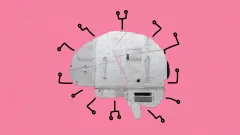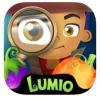Take a look inside 5 images
Lumio Farm Factor: Multiply and Divide Basics (Full Version)
Pros: Learning progression is well structured, allowing kids to build comprehension first, then improve fact fluency.
Cons: Learning progress cannot be tracked, and dragging veggies to create models can be redundant.
Bottom Line: An effective way to instruct and reinforce fundamental concepts, but kids may not stay engaged long enough to complete all of the levels.
Use the game as an instructional support and practice tool for kids who are just learning about (or are struggling with) multiplication and division. If possible, kids should work individually to complete a level within one of the two game modes. Then, come together as a class and discuss the models that kids used and how they helped show the meaning of multiplication or division. As an extension activity, have kids create their own models and equations and switch with a partner to solve them.
The app is organized into two game modes: Mystery Multiplication and Veggie Divide. Each mode includes 30 levels that begin by helping kids build comprehension and end by reinforcing concepts and helping build fact fluency. In Mystery Multiplication, kids drag veggies into baskets to make equal groups and complete repeated addition sentences. As they progress, kids complete problems that include the multiplication symbol and find missing factors in equations. In Veggie Divide, kids drag veggies to pack them into crates, dividing the veggies into equal groups. Kids eventually complete problems that include the division symbol and find missing numbers to build an understanding of division as the inverse of multiplication. Kids can earn up to three lightning bolt rewards for each correct answer.
Lumio Farm Factor: Multiply and Divide Basics (Full Version) is a game that uses models to teach kids the concepts behind multiplication and division. It supports a handful of Grade 3 Common Core State Standards for math related to Operations and Algebraic Thinking. Kids begin by using concrete models to build an understanding of multiplication as repeated addition and division as repeated subtraction. As they progress through the game, kids learn to use symbols and find missing numbers in multiplication and division sentences. They also build an understanding of division as the inverse of multiplication. If kids struggle to complete a problem, they can access visual cues and hints. Constructive feedback is given for incorrect solutions.
The activities teach good concepts, and the learning potential is strong; the only challenge is that the activities aren't especially compelling. Overall, this is a solid choice for math practice, but kids may need some encouragement to persist through the (sometimes tedious) in-game tasks.













